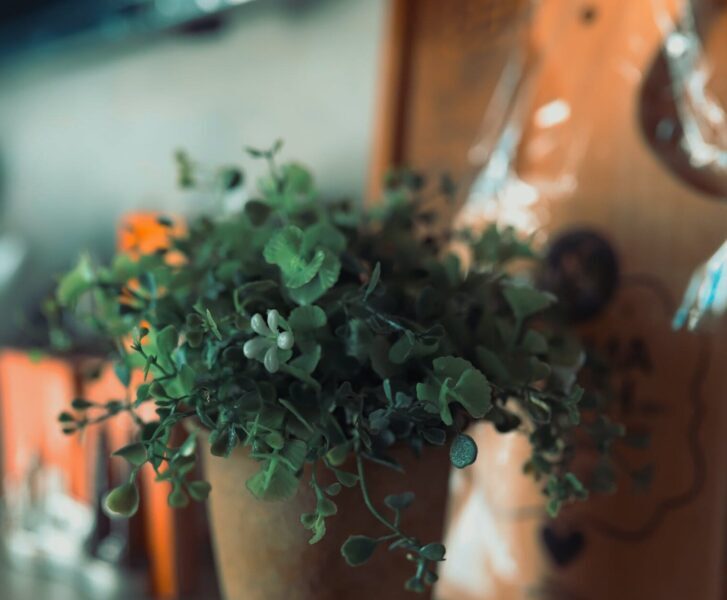Botany in Interior Design Basics: Unleashing Plant Potential for Healthier Homes
Dive into our insightful exploration of the science of indoor plants and their role in fostering healthier homes. This succinct guide examines the environmental benefits of houseplants, such as air purification, mood enhancement, and improved sleep quality. Whether you’re well-versed in gardening or just beginning your botanical journey, this article provides valuable insights on why botany in interior design can be so beneficial. We invite you to explore the world of domestic botany with us, demonstrating the transformative power of plants for your home’s well-being.
The Greenprint: How Plants Function and Flourish
The science of botany forms the foundation for creating robust indoor green spaces. Essentially, botany examines plant structure and function, allowing us to understand how they flourish.
The primary components of a plant—roots, stems, leaves, and flowers—each have unique roles. Roots provide stability and absorb water and nutrients, while stems transport these resources throughout the plant. Leaves harness sunlight for photosynthesis, and flowers, besides enhancing aesthetic appeal, attract pollinators to ensure reproduction.
Photosynthesis is a distinctive, vital process that enables plants to convert light energy into chemical energy, generating sugars and oxygen from carbon dioxide and water. This oxygen production is essential for enhancing indoor air quality, thus, integrating photosynthetic plants into our homes can elevate oxygen levels and minimize pollutants, fostering a healthier living environment.
With a fundamental grasp of botany and photosynthesis, we can further explore plants’ integral role in enhancing your indoor space’s overall well-being.

Breathe Easy: Indoor Plants as Health Boosters
Indoor plants serve a purpose beyond their aesthetic appeal; they are natural facilitators of health and wellness. Plants are nature’s air purifiers, enhancing indoor air quality through phytoremediation – a process in which pollutants such as volatile organic compounds are absorbed and fresh oxygen is released. Certain species, like Spider Plant and Peace Lily, excel in filtering toxins like formaldehyde and benzene, thereby fostering healthier indoor air.
Plants also significantly contribute to our psychological health. Studies have shown reduced stress levels, enhanced focus, and mood elevation when plants are present. Indoor plants have been associated with improved cognitive function and productivity, making them an excellent addition to workspaces and study areas. [1]
Furthermore, plants influence sleep quality and general well-being. Some, like Lavender and Aloe Vera, release calming scents promoting relaxation and improved sleep. The enriched oxygen environment plants create contributes to a rejuvenating atmosphere for sound sleep.
The affirmation of scientific research on these claims underscores the extensive health benefits of indoor plants. By incorporating greenery into our homes, we can experience cleaner air, reduced stress, improved focus, better mood, and enhanced sleep. Thus, welcoming indoor plants into our homes means welcoming myriad health benefits.
Harmony at Home: Plants' Environmental Influence
Indoor plants significantly improve our living environments. They naturally regulate humidity, combating dry indoor conditions through transpiration and supporting healthier respiratory conditions. Plants may also mitigate noise pollution, their leaves, stems, and branches absorbing and scattering sound waves, thus promoting tranquility, especially in spaces with hard surfaces.
Moreover, the concept of biophilia suggests that indoor plants strengthen our innate connection to nature, fostering relaxation, sharpening cognitive function, and encouraging sustainability.
In essence, indoor plants play a pivotal role in creating healthier, quieter, and more nature-connected living spaces, promoting an eco-friendly lifestyle and a more sustainable planet.
Greening the Indoors: Embracing Botany in Interior Design
Exploring the science of botany can significantly improve the health of our indoor spaces. By understanding the structure and needs of plants, we can maximize their air-purifying abilities, their positive impact on mental well-being, and their broader environmental contributions. Indoor plants bring improved air quality, stress reduction, increased focus, and better sleep. They also manage humidity, diminish noise pollution, and enhance our natural connection to nature. With these benefits, making indoor plants a cornerstone of your home decor makes sense. Also, check out our suggestions for some great starter indoor houseplants to add greenery to your home, today.
In subsequent articles in this series, we will expand on the role of plants in interior design, discussing design strategies, plant care tips, and recommending specific plants. Ready yourself to rejuvenate your living spaces through the power of domestic botany.
References:
[1] Han, T., Ruan, W., & Liao, S. (2022). Effects of Indoor Plants on Human Functions: A Systematic Review with Meta-Analyses. International Journal of Environmental Research and Public Health, 19(12). https://doi.org/10.3390/ijerph19127454
